#Faust – A German Folktale
Explore tagged Tumblr posts
Text


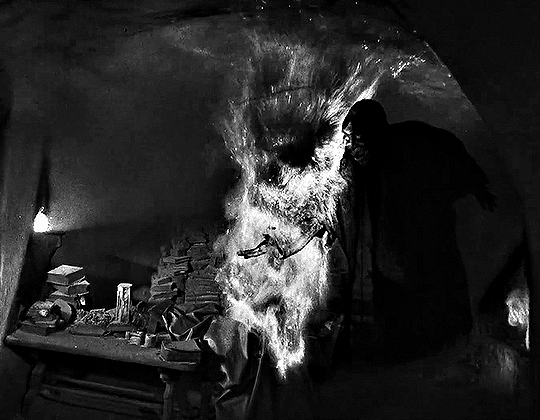
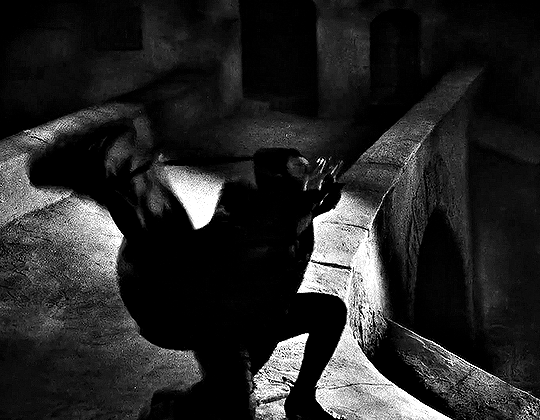


FAUST – A GERMAN FOLKTALE (1926) dir. F. W. Murnau
#faust#faust a german folktale#horroredit#classicfilmedit#filmedit#classicfilmsource#classicfilmblr#classicfilmcentral#dailyworldcinema#cinematv#cinemaspast#uservintage#userstream#filmdaily#filmgifs#moviegifs#*mine#userfilm#f w murnau#1920s#y: 1926#horror#drama#classic#silent film#films
2K notes
·
View notes
Text
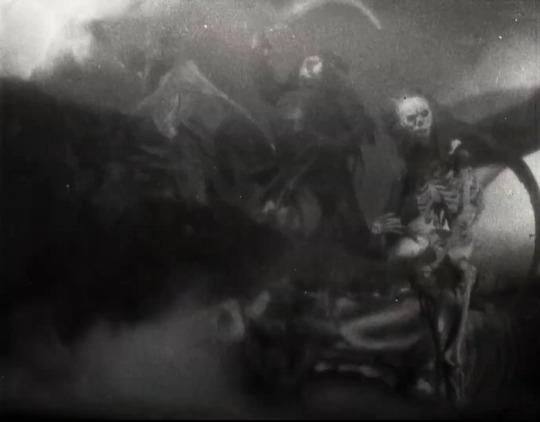



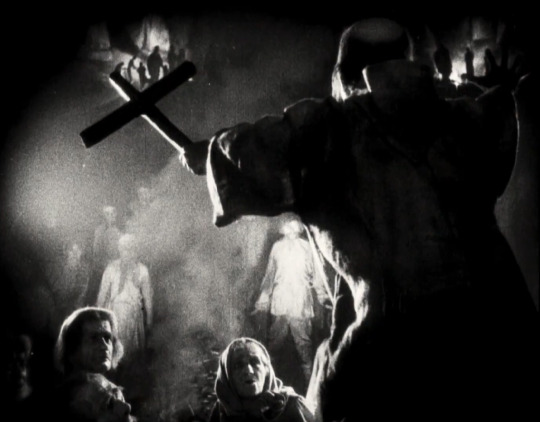
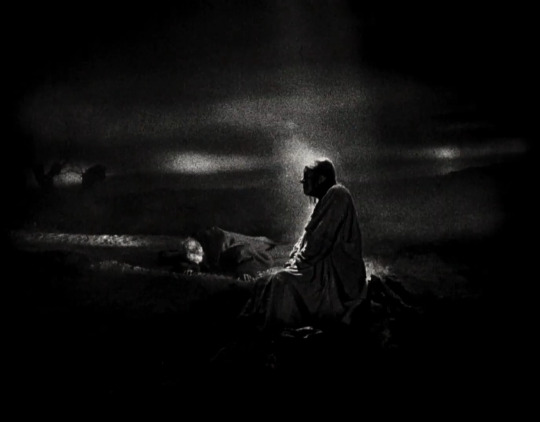
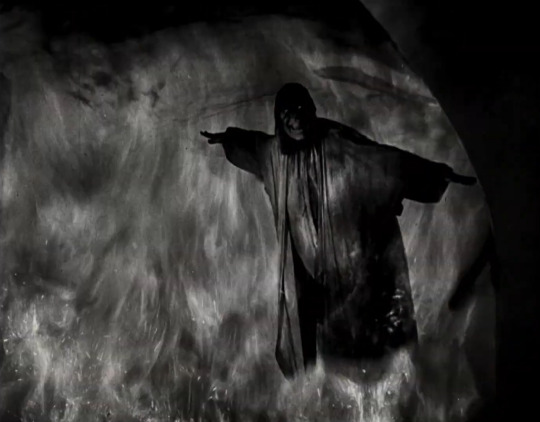
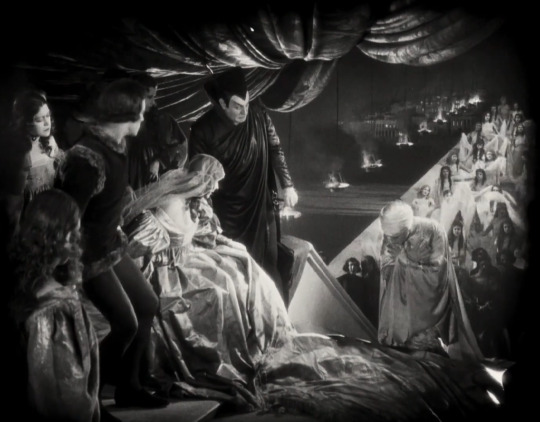
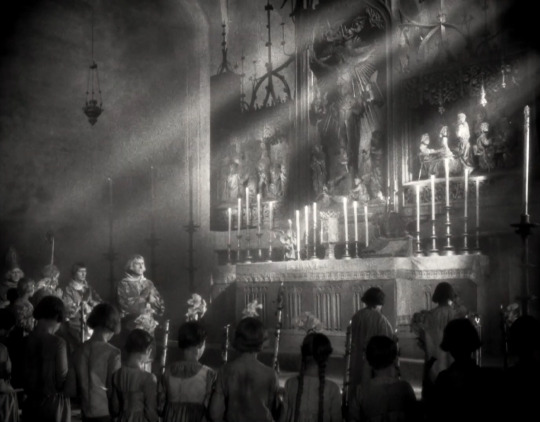


"The greatest miracle of all is man's freedom to choose between good and evil!" Faust – Eine deutsche Volkssage (1926) dir. F. W. Murnau My Ko-fi
#Faust – Eine deutsche Volkssage (1926)#Faust – Eine deutsche Volkssage#Faust – A German Folktale (1926)#Faust – A German Folktale#F. W. Murnau#Germany#occult#dark fantasy#my screenshots#stills
108 notes
·
View notes
Text

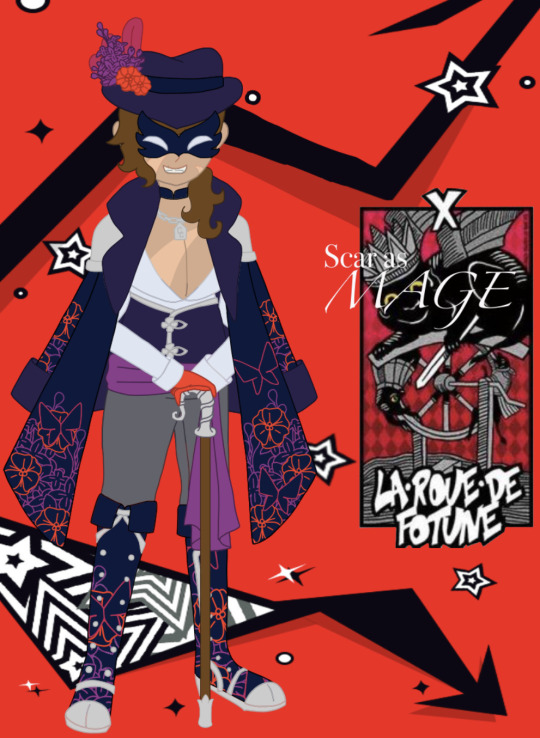

This entire project took almost all of summer vacation…
I know both Cub isn’t part of the life series, but I just couldn’t resist!
Southlanders
Team B.E.S.T.
The Scottage + Gem
Fairy Fort
Joel - “Bolt” - The Chariot Arcana - Zeus/Thor
“Former” delinquent and architecture student, Joel is abrasive, sarcastic, and even a little mean spirited. He has a short temper, but is highly protective of his friends, especially Jimmy. He tends to poke fun at his friends, and refuses to give up on anything, even if the odds are against him and it’s best to admit defeat. The only one who can reign him in is his girlfriend, who he is hopelessly in love with and can match his stubborn personality with her own. And remember; He’s not obsessed with that stupid engineer with the face mask.
His persona in the metaverse is Zeus. Joel’s Empires character was a Zeus like figure, so why not have him as his persona? Zeus is known for messing in mortal affairs for better or for worse, either punishing those who wrong him or “inconveniencing” anyone who catches his eye. He is the god of storms and can summon lightning with ease, and has an ego to match.
His Ultimate Persona is Thor, The Norse god of strength, storms, and thunder, much like Zeus. Thor wields the legendary hammer Mjolnir, which can smite anything that it hits. He’s noted for his temper and the time Mjolnir was stolen and he had to dress as Freyja in a wedding dress to take it back.
Scar - “Mage” - The Fortune Arcana - Pied Piper/Mephisto
An actor for an up and coming popular superhero show. Although he appears as a non-serious, goofy, and lighthearted demeanour, beneath that silly exterior is a cunning and intelligent hitman, with several kills under his belt. With the helps of his teammate and co-owner Cub, he created a hitman business (called “ConCorp”) with several people, ranging from politicians to businessmen, requesting his and Cub’s services for a hefty sum of money. He is in a shaky alliance with the Phantom Thieves, with his and Cub’s cooperation bought through a large amount of money.
His persona is The Pied Piper, the titular character of the german folktale and legend where a Piper in colourful clothing helps a town with a rat infestation by luring the rats away with his flute music. When the citizens refused to pay him for his efforts, he lured away their children, never to be seen again.
His Ultimate Persona is Mephisto, the antagonist of the german tale of Faust. Within the story, he offers Faust a deal; he’ll aid Faust in his pursuit of both knowledge and happiness, but if he ever feels complete and fulfilled, his soul is his to own. This created the adjective “Faustian” meaning someone who risks spiritual values for something in return.
Cub - “Warden” - The Death Arcana - Zeta Reticulan/Sisyphus
Cub is Scar’s business partner, and fellow hitman. Much like Scar, his laidback and chill demeanour hides a cunning sharp as a knife. He handles most of the business and financial matters in his assassination business. Many of his clients often assume he is more put together or “sane” compared to Scar, but he simply appears more laidback and is possibly even more unstable compared to Scar. The alliance between the two hitmen and the Phantom Thieves is intensely unstable, with both parties having contingency plans in case of a betrayal.
Zeta Reticulan is another word for Martian or alien. They are stereotypically inquisitive, and one of the most popular tropes in media is where an alien steals a person or livestock to experiment with. They appear all over the world with several people giving testimonies to seeing them. They are typically seen as on par or exceeding human intelligence.
His Ultimate Persona is Sisyphus, a king who trapped and evaded death itself. By locking Thanatos, the personification and god of death in a trunk, he was able to continue living beyond what was originally planned. As punishment however, he was forced to push a giant boulder up a mountain in death, unable to move on.
#PERSONA X MCYT AU#Hermitcraft#Hermitcraft au#life series#life series au#goodtimeswithscar#gtws#hermitcraft joel#joel smallishbeans#smallishbeans#cubfan#cubfan135#ariana griande#persona au#persona 5#persona 5 au#third life#last life#double life#limited life#secret life
33 notes
·
View notes
Text
Favorite Version of Faust
78 notes
·
View notes
Text
My views on Hereditary Witches / Hereditary Wiccans
Now, there are some Neo Pagans, Asatru, Witches, and Wiccans (Particularly British Traditional Wiccans) who say that you need to be initiated into The Craft to count as a true Witch or Wiccan. Even more stringent are those that believe in "Hereditary witch" or "Hereditary Wiccan."
Now, let me establish my totally not rooted-in-racism credentials. (Can you tell I don't like this?!)
My biological father was adopted by the Pike Family of Bermuda and Long Island, New York so I won't be relying in them much as I do not know my blood line on that side and never took a DNA test.
On my mother's side however…
My Aunt Susan was a practicing Chaos Witch. And I'm fairly certain my Aunt Jennifer (who I do not have a very good relationship with) is a practicing witch. She does the typical Sage cleansings, has a book on Candle Magick, and is a seventh daughter. She even gave me a pentacle necklace once as a gift so I'd argue she initiated me if an initiation is required. My Aunt Susan and I had also discussed magical beliefs and the uses of and meaning behind various stones and crystals so that may count.
I also have a younger cousin (Jessica Conroy) who sometimes identifies as a Wiccan.
Everyone on my maternal side has had ghostly encounters, sensed spirits, or interacted with spirits.
An Irish Great great-grandmother was said to have encountered the Family Banshee (Bean Sidhe) before she died. A Family Banshee is a spirit (usually of a deceased relative) who warns of an impending death, having become a Banshee posthumously. If you hear The Banshee it means someone you know will die but if you see the banshee it means you will die.
My late mother believed she sometimes caused street lights to go out simply by being near them, whether intentional or not. These were not the motion activated street lights that shut off and on at the presence of activity. Plain, old fashioned, street lamps.
And going back further than that, my Aunt Jennifer did a 23 and me DNA test and found she is mostly Germanic, and 53% specifically from the Black Forest region of Germany. (as she is my maternal aunt that makes it about twenty-five percent of my own DNA).
The Black Forest is the real world origin for The Enchanted Forest of most German fairy tales. It is said to be home of such figures as Baba Yaga and many other classic witch and werewolf stories. Most of the Grimm Fairy tales can be traced to The Black Forest, it is where they did most of their folklore collecting. The region is supposed to be one of the most haunted locations in Europe.
The Black Forest is also the source of the Danube, where the famed Vladislaus Drakulya (Yes, that Dracula) the III of Wallachia, also known as Vlad Tepes (The Impaler), did battle against Ottoman Turks.
In my Germanic lineage there's also a high chance (unproven) that I am directly or indirectly related to Doktor Johann Georg Faustus (born 1466 or 1480.), the self-proclaimed sorcerer who is the basis for the Faust Legend that was turned into the play Doctor Faustus by Christopher Marlowe and Faust Parts 1 and 2 by Goethe (The German National Play).
Doktor Johann Georg Faustus has at least two surviving grimoires that can be found today. One of which is The Black Raven, also called The Trifold Cohesion of Hell.
My mother's maiden name was Kuhn. And that name has some unfortunate connections to Nazi Germany but if you go back further than that, the name has connections to werewolves.
A Kuhn collected werewolf folktales. An Adalbert Kuhn, specifically, even wrote the book "Werewolf" in 1859. (Source: University of Pittsburg, Werewolf Legends from Germany). Adalbert wrote of a magical belt that allows for werewolf transformations and a case of a servant who transformed at night to eat livestock. He also described magical methods of how to transform a human back from having been turned into a hare or other animal, including a werewolf, and he described iron's use against werewolves.
Adalbert goes into detail that when a human to animal transformation is deliberate, you can force the person out of animal form by throwing something iron over them. He said that this is called "Making Blank" the witch and that when this happens with a werewolf, the wolf pelt will burst from the forehead crosswise and the naked human will emerge. All the animal to human transformations he describes result a naked human.
Adalbert Kuhn's full name was Franz Felix Adalbert Kuhn and based on my own research it appears I may have inherited my eyesight problems from him. His eyes look a great deal like my own. He was a known folklorist and probable occultist (since he devised counter spells for things like animal transformations and werewolfism).
A Phillip K. Kuhn was an established historian and author in England, born in 1933, roughly four years after my grandfather, James Kuhn (they were likely cousins). Philip K. Kuhn wrote research papers on Asian magical practices and was commended on the respect and consideration he held for the traditions and culture while doing so.
Now back to my paternal line, thought my biological father was adopted my mother suspected he was adopted from one branch of the Pike family, to another branch of that family, so I will only touch on this briefly.
If what my mother had told me is correct that means I’d be related to Robert Pike, (born in England in 1616 and died in in the American colonies in 1706, he was 90). He was a town official, who settled disputes for the settlement of Salisbury and was a vocal opponent to the Salem Witch trials, so much so that he, himself, was suspected of witchcraft. Robert Pike even was excommunicated partly for his defense of those accused of witchcraft and for defending Quakers. He was never officially charged with witchcraft, himself, but he famously spoke out against the witch trials. His excommunication was later undone,and he was reinstated by the very man who ordered his excommunication.
When three Quaker women were sentenced to be whipped in eleven different locations, including Salisbury, for the crime of preaching in public, it was Robert Pike who interceded and violated the “Warrent” that ordered it.
When the women arrived in Salisbury to be whipped he defied the decree and freed them. A plaque about Robert Pike’s defiant and (at the time) controversial stance reads
“"Cut loose these poor ones and let them go; Come what will of it, all men shall know No warrant is good, though backed by the Crown, For whipping women in Salisbury town!"
He actually was vocally against violence toward women, which was unusual for the era.
And in regard to the Salem witch trials he said that it was better that a hundred guilty should go free than for even one innocentsoulto suffer for a crime they didn’t commit.
Robert Pike wrote a long defense for Mary Bradbury(one of the accused witches)and petitioned for reform to the justice system, including the need for substantial evidencebefore a convictionbutMary Bradburywas still hanged.Robert Pike’sdefense of her, though, was used to help reform Massachusetts law after the witch hysteria died down.There is a plaque for him at the Salem Witch museum.
So now that I have established my witchy / occult pedigree, though dubious in some areas, I have only stated all this to validate what I say next for those who would dismiss it as the words of an “outsider.”
And here it goes..
It’s all Bullsh-t. Whether I’m related to the (maybe witch) witch defender, Robert Pike, or the sorcerer Faust, or the werewolf occultist A. Kuhn, or if I have aunts,or a later mother, or cousin,who considered / consider themselves witches, none of that matters.(especially since most of my maternal family is Catholic anyway…)
None of that matters because having a natural predisposition toward magick doesn’t require it coming through bloodlines. If you believe being a witch is genetic, than fine. It’s a sort of mutation that you are naturally incline toward the magical and supernatural, and being a mutation means sometimes it won’t show up in the blood line and sometimes it may happen randomly to someone with no trace of previous family witches. (Hello, Squibs and Muggle-borns! Ugh, I hate using the Harry Potter jargon.)
I think most people can tap into the world of the arcane and even successfully cast spells, it’s just that it comes easier or innately for some.
Even if it can run in families, it had to start randomly at some point. At some point a witch had to come from two non-witches. Even blue eyes started as a mutation, and sometimes still pops up randomly from time to time in lineages with no blue eyes known in the family lines.
My point is I think anyone can be a witch. And I wasted my time writing out four pages of self-research just so the more gate keepy and pretentious might hear me out.
I have English, Irish, and German blood in me (American) and probably a bunch of other bits and pieces too. I think “hereditary witch” nonsense has its roots in xenophobia and racism and it makes me feel dirty to pander to it.
You want to feel special, do something special. Your blood doesn’t matter. The elementals and Ancient Gods don’t care who you are related to. What matters is your soul.
ANYONE can be a witch, DNA test not required.
Note: I DO identify as Wiccan. This is not an Anti-Wiccan post.
3 notes
·
View notes
Audio
Your dedicated hosts travel back to 1926 for F.W. Murnau's FAUST - EIN DEUTSCHE VOLKSSAGE, translated as FAUST - A GERMAN FOLKTALE!
We cover the many iterations of Faust: The man, the myth, the legend.
Context setting 00:00; Synopsis 59:20; Discussion 1:17:36; Ranking 1:44:39
#podcast#faust#a german folktale#f w murnau#hans kyser#erich pommer#gosta ekman#emil jannings#camilla horn#wilhelm dieterle#frida richard#yvette guilbert#carl hoffman#werner richard heymann#christopher marlowe#johann georg faust#mephistopheles#mephisto#the tragical history of dr faustus#the man the myth the legend
8 notes
·
View notes
Photo

Faust
directed by F.W. Murnau, 1926
#Faust#Faust – A German Folktale#Goethe's Faust#Faust – Eine deutsche Volkssage#F.W. Murnau#movie mosaics#Gösta Ekman#Emil Jannings#Hanna Ralph#Camilla Horn#Werner Fuetterer
19 notes
·
View notes
Text
Fun facts about the mythological mephistopheles to celebrate him being added to obey me
mephistopheles actually does not appear in the bible at all and as far as I’m aware any of the keys of Solomon but he is from the story “Faust” which is a German folktale about a man who sells his soul to the devil for unlimited knowledge and other things. Mephistopheles is a representative for the devil which is where he is shown and helps the person who souled his soul do many horrific things (I won’t say to much so I don’t spoil the story for anyone that wishes to read it).
Despite mephistopheles only big appearance being in Faust he is an extremely popular demon even outside of Germany as there has been opars about him and the story Faust dating all the way back to the 1600 and because of pop culture mephistopheles popularity has only grown as he has been in many shows, games and books such as blue exorcist, Ultraman Nexus and my personal favourite shin megami tensei. He was also almost joker from persona 5 main persona before it was changed to arsene lupin
mephistopheles is also seen as an alternative name for Satan or the devil this means the character mephistopheles might have a friend ship or an interesting relationship with Satan and diavolo
Finally on the left is what he commonly is believed to look like and on the right is how he looks in smt IV: A
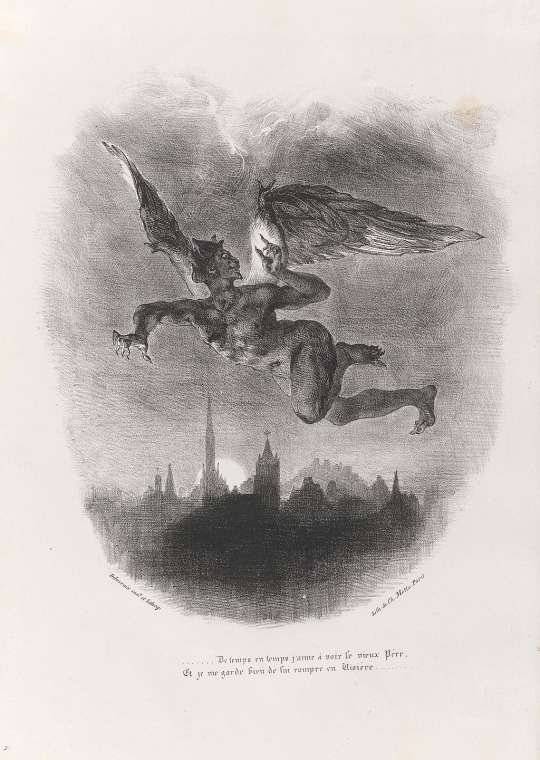

#mephistopheles#obey me#obey me shall we date#idk if this is the kind of stuff the obey me fandom like but I always find the history behind characters cool
51 notes
·
View notes
Text
i named quilge’s weapon after the German opera “der Freischütz” ( translated as “the free shooter” or “the marksman” ) composed by C. M. von Weber in the 1820s. It is based on the German folktale about a man who sells his soul to the devil for a bewitched gun that shoots magick bullets ; these bullets always hit their target . The final bullet , however , is thusly aimed solely by the devil himself , not the marksman .
below is the jägerchor’s song , “was gleicht wohl auf Erden dem Jägervergnügen? ” ( translated in the video as “ what on earth is like Hunter’s pleasure ? “ ) it also opens up with loud , energetic horns music , much like the hunting horn I mentioned last night . der Freischütz can be , in some manners , familiar to people who also know the German Faust tale , in terms of its concept .
youtube
#jo ho ! tralalala ~#it should be clear now that I Love Opera#HAHAHHA#[ 𝖜𝖔𝖑𝖋 ! ] | outofcharacter .#tbt .
5 notes
·
View notes
Note
I was wondering if there was any significance/symbolism was behind Woland's knee hurting in M&M? I don't remember it being explained in the book, but I might be misremembering
So, technically it is explained in the book, but only the uncensored versions
The spot in the book, chapter 22 By Candlelight
“ ‘my attendants insist it’s rheumatism’ Woland was saying, not taking his eyes off Margarita, ‘but I strongly suspect that this pain in my knee was left me as a souvenir by a charming witch with whom I was closely acquainted in the year 1571, on Mount Brocken, on the Devil’s Podium’
‘Ah can that be so!’ said Margarita.
‘Nonsense! In another three hundred years it will all go away!...”
According to Woland it’s a sex injury, but I think you can interpret it as he immediately goes back on what he’s saying by telling her it’s ‘Nonsense!’ Or that’s because of her expressing some sort of sympathy and it’s a really weird way of waving her off (this barely even touches on how flat out weird Woland is when talking to people until after the ball)
I’ve only seen this note in the Pevear & Volohonsky translation (large chunk of why I have all the English copies is for the different notes made by the translators) .
“Satan’s lameness is more commonly ascribed to his fall from heaven. Mount Brocken, highest of the Harz mountains in Germany, is a legendary gathering place of witches and devils, and the site of the Walpurgisnacht (as in Goethe’s Faust) on the eve of the first of May.”
Basically they’re saying, absolutely not it’s more likely from the fall. One of the things about Woland, while this is a Russian novel, he’s basically a walking talking Faustian reference (a point more or less made by the Master to Ivan because the Master knows immediately that the man from Patriarch Pond that Ivan and Berlioz spoke with is the Devil simply by his description because he is well educated and well read) so Germany has a lot of influence on him.
Before I go on an barely related side rant, yes basically it’s a reference to the fall.
So I just learned a new bit, Bulgakov also drew heavily on German folktales of the Devil when putting together Woland, more than just Faust (which is interesting considering a large part of Woland is to satirize Russian society at the time...while being also pretty damn German idk what Bulgakov is trying to get at there) In the same conversation I have above he tells Margo something about using herbs that his Grandmother left him, which is in reference to a figure in German folktales, Old Frick/Frau Fricke. Interestingly she has ties to the Wild Hunt but also I guess later is associated with being the devil’s grandmother (probably nature spirits being called devils instead of The Devil) but for only having 2 hours of sleep and it being close to 6 am that is what I’m able to understand at the moment XD.
#ask#asks#tanz-der-trash#I am so sorry this got so long#I really hope this 1 makes sense and 2 answers your question#master and margarita
22 notes
·
View notes
Photo

Faust – A German Folktale (German: Faust – Eine deutsche Volkssage), 1926 silent film produced by Ufa, directed by F. W. Murnau, Camilla Horn pictured above as Gretchen/Marguerite Faust, in one of the most durable legends in Western folklore and literature, the story of a German necromancer or astrologer who sells his soul to the devil in exchange for knowledge and power.
41 notes
·
View notes
Text
Freaky Facts: Faust – Eine deutsche Volkssage (1926)
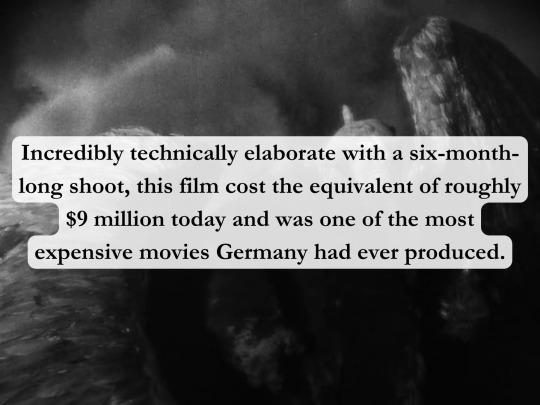
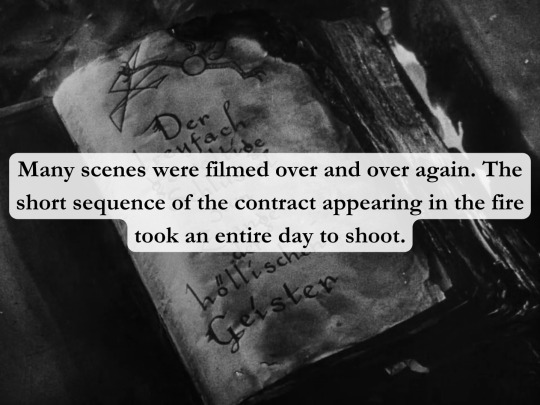
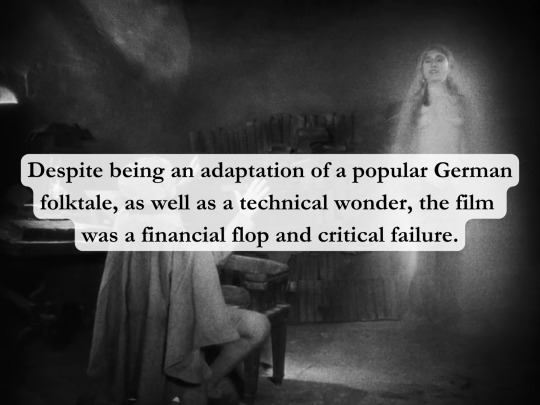

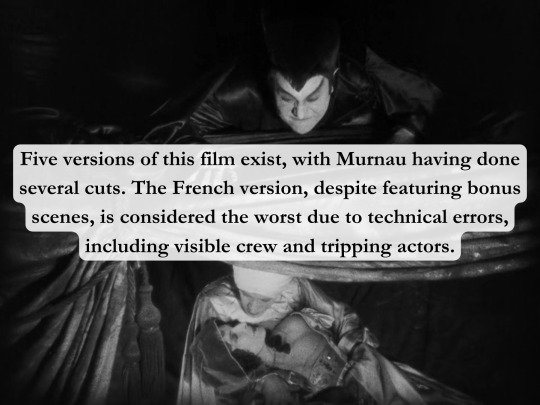

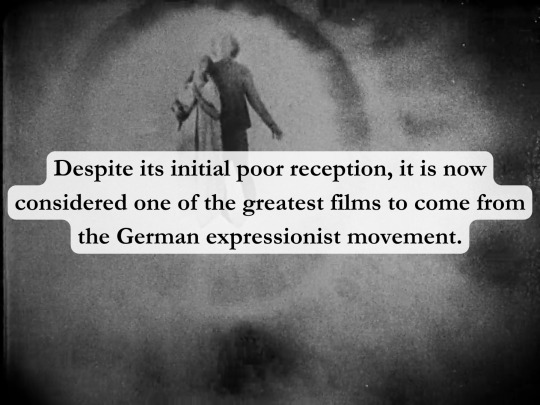
(My Review) (My Screenshots)
#Faust – Eine deutsche Volkssage (1926)#Faust – Eine deutsche Volkssage#Faust – A German Folktale (1926)#Faust – A German Folktale#Freaky Facts
26 notes
·
View notes
Text
Maggi’s Sufurino

"The Book of St Cyprian" "Jonas Sufurino", attribution.
The history of fictional magicians is long and tawdry, often evolving out of folktales related to actual historic figures there are those who were created whole cloth for the purpose of selling books.
While we may have record of those occultists like Michael Scot, Johann Faust, and others who were in fact real people, there are some figures who defy historic documentation. St Cyprian himself is supposed to have existed in the 3rd century of the common era, but even the Catholic Church has been hard pressed to provide any hard evidence for a Cyprian of Antioch.
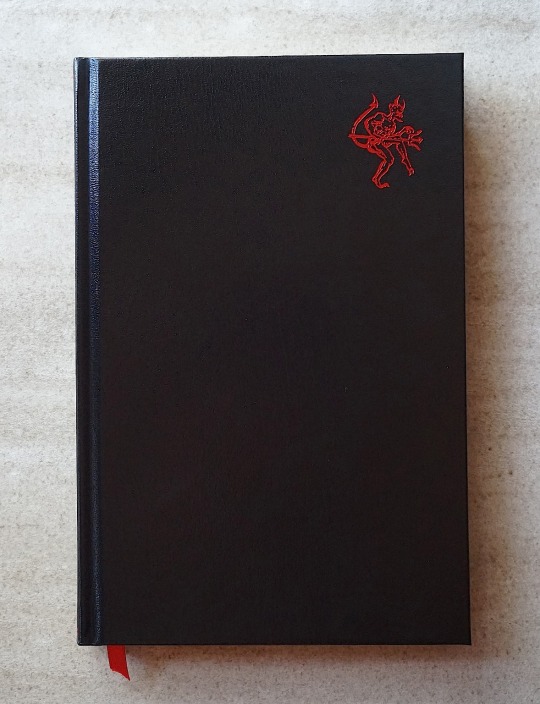
Jonas Sufurino seems to be a character who was created as part of the evolving Cyprian mythologies, possibly by a Spanish publisher, to give a more modern context to a supposedly ancient text.
As the story goes, Sufurino was a German monk at the Abbey of Walkenried near Mount Brocken, a location famous for its legends of witches and devils meeting there each year on Walpurgisnacht. He claims to have gotten Cyprian's book from the Devil himself after conjuring him forth.
The book we have at hand goes even deeper into the abyss of speculative authorship as we are presented with a version of the book that is said to be translated from the German of Sufurino's hand, apparently a copy/translation Sufurino made of the Hebrew original written by St Cyprian, to the Spanish that has been translated by Humberto Maggi.
That no German version of the work ever existed is more than likely, but the path of authorship is convoluted to say the least, although no credit is given for the translator who was supposed to have brought the work from German to Spanish.
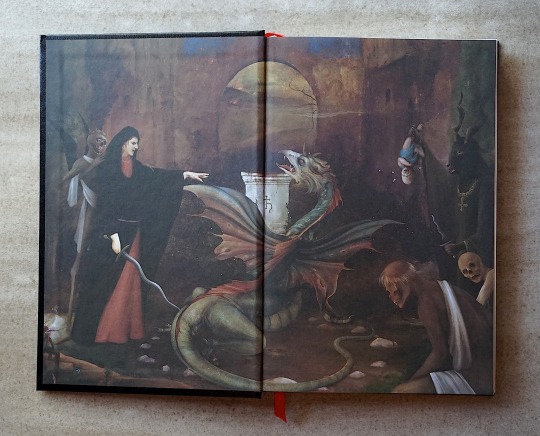
Maggi's earlier translation of the "Book of St Cyprian" was drawn from a Mexican edition published in 1920. That earlier volume is a tome of a work that covers the ground of hodgepodge occult sources. Each Cyprianos seems to be tailored to the local reader's interests, culled from a list of sources nearest to hand to each publisher in question.
While Maggi's earlier Cyprian takes most of its content from the "Le Véritable Magie Noire" the Sufurino, an edition published in Spanish in Barcelona, casts an even wider net, taking from the "Grand Grimoire" and the "Black Pullet" as well. Maggi speculates, based on scholarship by Félix Castro Vincente, that the Sufurino was copied in part from earlier Portuguese editions. It does contain a series of charms that involve the torture of animals that is found in the Portuguese Cyprians, but lacks the treasure hunting aspects.
The work is a mixed bag of ceremonial magic whose roots ultimately come to us, via the hand of many editors over many years, from the Greek Magical Papyri. It contains versions of the "Key of Solomon", "The Red Dragon", "The Grand Grimoire", as well as sections on magic candles, "Chaldean and Egyptian" philters, enchantments and sorceries.

Maggi has done a splendid job bringing this work into an English translation. It is a handsome volume, beautifully bound in black (faux?) leather with metallic red stamping to the spine and a metallic red devil in the corner of the cover. The paper is a nice thicker quality of cream with a rougher tooth, giving it an old book feel. The endpapers are printed with a splendid artwork by Daniele Valeriani.
For any scholar of Cyprian literature this is a must have edition in one's collection. Nephilim Press have provided an important part of the puzzle of St Cyprian the Magician as an Iberian folk character and focal point of an evolving magical tradition that has spanned centuries.
Get yourself a copy from Nephilim Press here:
Sufurino Humberto Maggi
#Skeptical Occultist#occult#occult books#grimoire#grand grimoire#black pullet#conjuration#st cyprian#humberto maggi#nephilim Press#witch#witchcraf#folkwitch#Solomonic Magic#magic circle#enchantment#curse#charm#bruja#bruxa#bruxo#lwa#atr#cyprianos
104 notes
·
View notes
Text
The Witch That Whirls in the Air: The Folkloric Roots of Walpurgisnacht in “Puella Magi Madoka Magica”
“On this night, I became a Magical Girl.”--Homura Akemi, Puella Magi Madoka Magica Drama CD: “Memories of You”

(The Witch Walpurgisnacht descends on Mitakihara.)
Walpurgisnacht casts a shadow—both literally and figuratively—over Puella Magi Madoka Magica from the very beginning, first appearing in Madoka Kaname’s dream as a looming figure floating ominously in the sky, while Homura Akemi tries in vain to defeat it (the scene accompanied by the appropriately ominous song “Magia”). It isn’t mentioned again until the sixth episode, when Homura tells Kyoko Sakura that Walpurgisnacht will appear in Mitakihara in a couple of weeks, and again in Episode 10, when its importance to Homura’s story and the overall plot are revealed. In the eleventh episode, Walpurgisnacht finally makes its appearance in the city, creating a supercell storm and forcing the civilians into a shelter, leaving the city abandoned while Homura faces off against it on her own. It appears in the middle of the storm, an upside-down giant of a woman dressed in medieval clothing, with gears where her feet should be, heralded by a surreal, circus procession, and accompanied by shadowy, ghost-like Familiars. While Walpurgisnacht may at first glance appear to just be a generic monster with a distinctive name, it has many roots in folklore, not just in its name, but also in its appearance and methods.
(Spoilers incoming.)

(1668 woodcut of the Witches’ Sabbath, by Johannes Praetorius.)
Walpurgisnacht’s name is a reference to the German name for “Walpurgis Night,” named after Saint Walpurga; it is also known as “Hexennacht,” or Witches’ Night. It was in 1668 that the Brocken—the highest peak in the Harz mountain range in Germany—was designated as the meeting place for Walpurgisnacht, as recorded by Johannes Praetorius’s The Blocksberg Performance (Davies). It was this idea that was further expanded on by Goethe in Faust; a footnote for George Madison Priest’s translation of Goethe’s tragic play specifically refers to Walpurgisnacht as a time that witches hold “carnival” on the Brocken, the highest peak in Germany’s Harz Mountains, a fact that is visually referenced when Walpurgisnacht arrives in Mitakihara with a parade of colorful animals signaling its arrival (Goethe 95). While traditionally set on the evening between April 30th and May 1st, no exact day is given in Madoka for when Walpurgisnacht appears; however, it is not a stretch to assume that it is also meant to be on April 30th.
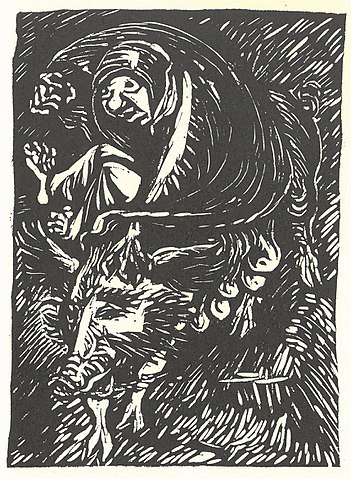
(Dame Baubo as illustrated by Ernst Barlach, c. 1923.)
While Walpurgisnacht being a name for a specific witch associated with the day is new, the idea of a central, witch-like figure is not. One example appears in Goethe’s Faust, when Faust and Mephistopheles travel to the Brocken on May Eve, following a Will-O’-The-Wisp to the sight where the witches gather. There they see a group of witches, making their way to the celebration. Among them is a figure riding on a sow—this figure is recognized as “old Baubo,” to which the witches’ chorus responds to with “In front, Dame Baubo! Lead the crew! /A sturdy sow with mother stride, /All witches follow in a tide” (Goethe 96). This figure, Baubo, actually originates from Greek Mythology, as she was a demigoddess most known for making Demeter—who, at the time, was grief-stricken over the disappearance of Persephone—laugh by exposing her genitalia (Theoi). Just like how Baubo is associated with laughter, the Walpurgisnacht of Madoka Magica is portrayed as constantly laughing as she floats in the air; additionally, one can see that Baubo, a Greek figure, has been demonized into being associated with witches and the Christian Devil. This phenomenon of such a figure being turned into a demonic creature is not unique to Faust.
In their article “Becoming the Labyrinth: Negotiating Magical Space and Identity in Puella Magi Madoka Magica,” Sara Cleto and Erin Kathleen Bahl point out that Walpurgisnacht has many visual similarities to European nobility, shown in her “elaborate, blue gown with exaggerated bell sleeves and a cascading, tiered skirt,” while her head has a headdress that “tapers to two sharp points, suggesting horns or a crown.” “She resembles nothing so much as an evil queen,” Cleto and Bahl write, “a figure popularized most by Snow White tales” (9). Indeed, with the other folkloric/fairy tale imagery (both traditional and literary) referenced in the series such as “The Little Mermaid,” The Nutcracker and the Mouse King, and Goethe’s Faust, it would not be too far of a stretch to draw comparisons between Madoka and Snow White, especially since, as Cleto and Bahl point out, a central theme in Snow White is the generational conflict between a young girl and an older woman, which echoes the war between the Magical Girls and the Witches they will inevitably become when they are consumed by despair (9).
But if one looks at Walpurgisnacht’s general appearance—a queenly figure that rides out in the sky and terrorizes the land, especially children (the Magical Girls)—then one can also draw a parallel to the Biblical queen Herodias; specifically, the version of her that became a part of witch folklore. In the Book of Mark in the New Testament, Herodias was the wife of Herod who opposed John the Baptist, as the latter spoke against her marriage to Herod, because she had been Herod’s brother’s wife beforehand. She eventually gets rid of John by having her daughter dance for Herod at a party, who, impressed, offers to grant her anything; she then asks for John the Baptist’s head (New Living Translation, Mark 6:14-29) .
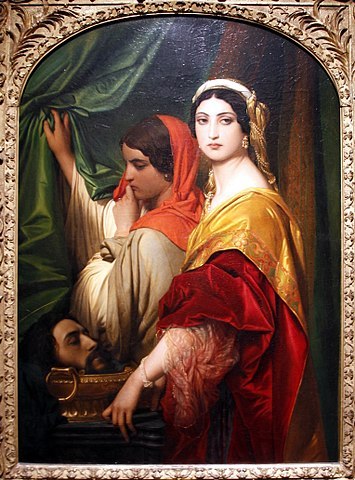
(Herodias, as painted by Paul Delaroche, c. 1843.)
That is where the story ends in the Bible, but folklore expands a bit on the aftermath. In Ysengrimus, a collection of folktales in Latin written by the poet Nivardus around the year 1148, Herodias is conflated with her daughter as the figure who danced for Herod; after receiving the head of John the Baptist, Herodias attempts to kiss it, having been infatuated with him. However, the head hisses at her, “with such force that she was blown up into the air and out through the skylight;” and since then, “she has been driven through the skies on John’s implacable anger” (Ridenour 135-136). Jacob Grimm writes in his Deutsche Mythologie that the winds in Lower Saxony were believed to be caused by Herodias constantly whirling, eternally dancing in the sky; additionally, she was believed in some places to be a child-stealing demon (Ridenour 136). Just as Herodias is associated with eternally whirling in the air, Walpurgisnacht in Madoka is described as symbolizing “the fool who constantly spins in circles” and whose nature is “helplessness” (Puella Magi Wiki). And Walpurgisnacht, as a Witch who was once a Magical Girl, certainly is helpless, being now nothing more than a pawn in the Incubators’ twisted plans.
In his book Witchcraft in the Middle Ages, Jeffrey Burton Russell refers to the Canon Episcopi, a text written in the early Tenth Century; the text itself refutes the existence of witches, in that it claims that any such stories are the result of people being deceived by the Devil, upholding the opinion that it is impossible for a human to wield magic (Russell 77). Within the Canon are references to witches who rode out in the night with “Diana, goddess of the pagans,” a reference to Diana, the Roman goddess of the hunt (Russell 76). Russell then adds that Diana is one of many goddesses demonized to be associated with Witches by Christianity; another example being the Germanic Holda, who is mentioned in the Corrector by Buchard of Worms, another important document of witchcraft (80-81). In Eisenach, Germany, Holda and her host are said to emerge from the Horselberg Mountain (“Hear-Souls Mountain”) with her horde of spirits on Christmas, Eve, New Year’s Eve, or the Winter Ember Days (Ridenour 132). This idea of a witch-like figure emerging on a certain day is echoed in Madoka with Walpurgisnacht’s arrival creating a deadline that the series’ plot hinges on.
Those familiar with Madoka may also note the idea of a figure being seen as both a goddess and a witch as paralleling Madoka’s status as being both Ultimate Madoka (a goddess) and Kriemhild Gretchen/The Witch of Despair (a witch); in fact, the idea of a goddess being demonized into a Witch by the Church is a pretty close parallel to the Incubators turning Magical Girls into Witches for their own plans. (There is some debate on whether Holda was a goddess or not, due to records describing her as such being made long after Christianization set in; nonetheless, the similarities are there (Ridenour 120).)

(Frau Holle, or Holda, traveling through the air with her spirits, by Joseph Sattler, c. 1927.)
After her initial attack on Walpurgisnacht—during which Homura throws an entire arsenal of weapon fire at it, barely putting even a scratch on the Witch—Walpurgisnacht manifests a horde of shadowy figures that begin to attack Homura. These minions are described as “countless souls drawn to [Walpurgisnacht’s] vast magical power,” and bear more than an uncanny resemblance to ghostly Magical Girls (Puella Magi Wiki). In concept, as ghastly beings flying amongst the storm, they are akin to the European legends of the Wild Hunt, a folkloric archetype that combines elements of stories regarding “hunting and diabolic hunters, lost souls, and slain warriors” (Ridenour 156). Slain warriors and lost souls—kind of like the Magical Girls of Madoka’s setting, who are shown to often die in battle at a young age; and whenever a contract is made with Kyubey, the result is the girl making said contract having her soul removed from her body, effectively rendering her undead, and therefore able to endure the physical strain of battling horrific entities. While the Wild Hunt is said in many cases to be led by Odin, there are stories where other leaders have been recorded; one such example being, again, Herodias, said to have sway over a third of the world, said third including “unbaptized children,” amongst other supernatural creatures such as elves and gnomes (Kloss 100). A similar belief is attributed to the figure Perchta, who is sometimes associated with Holda, and said to lead the spirits of the unbaptized and unborn out into the night (Ridenour 132).


(Top: Asgardsreien, by Peter Nicolai Arbo, c. 1872. Bottom: The Clowns serving Walpurgisnacht.)
Finally, while the influences on Walpurgisnacht have thus far been entirely Biblical and European in origin, there is also Japanese folklore to look to for a possible link between the legends of the West and the country of Madoka’s origin. Japan is full of stories regarding supernatural creatures, or “yokai;” there are also stories regarding the event known as the “Hyakki Yagyo,” or “The Demon Horde’s Night Parade,” when yokai were said to swarm through the city of Kyoto. In many ways, it was less of an attack and more of a swarm or manifestation that went throughout the city, akin to the Western concept of “pandemonium,” a “raucous revelry of creepy-crawlies” (Yoda and Alt x-xi). This legend is in many ways similar to the Wild Hunt of Europe; as such, while Walpurgisnacht’s imagery in Madoka is heavily-inspired by stories of witches and slain warriors swarming during a storm, the knowledge Japanese viewers may have of the Hyakki Yagyo would just as easily make Walpurgisnacht’s attack resonate with them, much like the term “Walpurgisnacht” resonates with those in the West familiar with the word as a serious threat in a series whose main enemies are Witches.
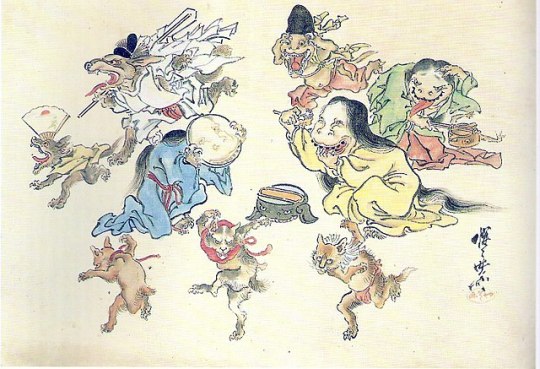
(”Hyakki Yagyo,” by Kawanabe Kyosai.)
While Walpurgisnacht makes only a few appearances in the whole of Puella Magi Madoka Magica, its influence is greatly felt throughout the series; and while ultimately just an obstacle keeping the main characters from reaching a happy ending, it also has a lot of mythological, folkloric, and literary archetypes of witches and hauntings caused by spirits, all rolled into one enigmatic figure (indeed, even after the origin of Witches are revealed, Walpurgisnacht still remains a mystery in everything from backstory to motives). Like a lot of the folkloric and literary references in the show, it is not necessary to be aware of all the history behind Walpurgisnacht to understand the narrative; that being said, if one does choose to look into it, they will find quite a lot of interesting stories.
Bibliography
“Agrarian Gods and Goddesses.” Theoi. Web. Accessed 23 April, 2019.
Cleto, Sara and Erin Kathleen Bahl. “Becoming the Labyrinth: Negotiating Magical Space and Identity in Puella Magi Madoka Magica.” Humanities, 5:20 (2016).
Davies, Owen. “Witches and Walpurgis Night.” OUPBlog. Web. Accessed 27 April, 2019.
Goethe, Johann Wolfgang von. Faust. Translated by George Madison Priest, William Benton, 1952.
Kloss, Waldemar. “Herodias the Wild Huntress in the Legend of the Middle Ages.” Modern Language Notes, 23:4 (1908), pp. 100-102.
Ridenour, Al. The Krampus and the Old, Dark Christmas: Roots and Rebirth of the Folkloric Devil. Feral House, 2016.
Russell, Jeffrey Burton. Witchcraft in the Middle Ages. Cornell University Press, 1972.
Sekien, Toriyama. Japandemonium Illustrated: The Yokai Encyclopedias of Toriyama Sekien. Translated by Hiroko Yoda and Matt Alt, Dover Publications, Inc., 2016.
Shinbo, Akiyuki and Gen Urobuchi. Puella Magi Madoka Magica. Studio Shaft, 2011.
The Bible. New Living Translation, Tyndale House Publishers, Inc., 1996.
“Walpurgisnacht.” Puella Magi Wiki. Web. Accessed 23 April, 2019.
Yoda, Hiroko and Matt Alt. “About The Books.” Japandemonium Illustrated: The Yokai Encyclopedias of Toriyama Sekien. Translated by Hiroko Yoda and Matt Alt, Dover Publications, Inc., 2016.
#puella magi madoka magica#walpurgisnacht#walpurgis night#madoka kaname#homura akemi#kyubey#witch#herodias#frau holle#frau holda#the wild hunt#hyakki yagyo#yokai#folklore#television#animation#anime#faust#goethe#random thoughts#analysis#long post#text
277 notes
·
View notes
Text





Faust – Eine deutsche Volkssage (Faust – A German Folktale) by Friedrich Wilhelm Murnau, 1926
5 notes
·
View notes
Text
Der Erlkönig
Since I mentioned it in the tags of my previous post, I thought I'd share some info on “Der Erlkönig” in case y’all haven't heard this incredible story and song!
It’s based on a Germanic folktale which has its roots in the Wild Hunt. The most famous version is set down in a 1782 poem by Johann Wolfgang von Goethe (of Faust fame), which really plays up the psychopomp aspect. You can read the original poem in both German and English here.
(I highly recommend any and all Wikipedia clickholes that may come of this.)
In the early 1800s, Franz Schubert set Goethe's poem to music arranged for piano and solo voice. Both parts are notoriously difficult, but when done correctly, it produces an amazing, haunting effect (and will probably be stuck in your head for the rest of recorded time).
The first version I want to share with you, sung by Dietrich Fischer-Dieskau, is probably the definitive rendition of this piece. Between the impressive accompaniment, his smooth voice, and the facial expressions he makes for the different characters, it brings out the best aspects of the music while still effectively communicating the text.
youtube
The second rendition I wish to share features Samuel Ramey, the voice of The Beast in Over the Garden Wall. This version is audio-only, but for fans of the show and/or really deep voices, it's a treat nonetheless. This version is actually performed in an even lower key than the original.
youtube
Happy reading and listening, friends!
#der erlkönig#over the garden wall#music#folklore#goethe#franz schubert#long post#hi my name is wendy and i love folklore and deep voices#tumblr post this challenge#get spoopy
137 notes
·
View notes